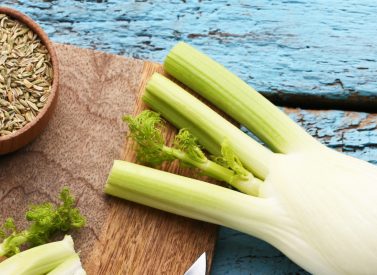Scientific Name: Foeniculum vulgare
Constituents:
- Volatile oils: anethole (dianethole & photoanethole), estrogole, and fenchone
- Flavonoids (rutin, quercetin, kaempferol and their glycosides)
- Coumarins
- Phytosterols
- Protein, fat, and carbohydrates
- Minerals (calcium, potassium, sodium, iron, phosphorus)
- Vitamins (thiamine, riboflavin, niacin and vitamin C)
Medicinal actions:
- Anti-inflammatory
- Antispasmodic
- Carminative
- Diuretic
- Emmenagogue
- Expectorant
- Galactogogue
- Phytoestrogenic
Mechanism of Action & Pharmacology:
- Anethole (and polymers such as dianethole & photoanethole) have been shown to have estrogenic activity. Isomers and several other compounds in the VO have been shown to have a similar chemical structure to that of adrenaline and dopamine, giving the plant a sympathomimetic action on the body (e.g. bronchodilation, lactogenesis).
- VO relaxes smooth muscle, regulates peristaltic functions of the GIT and are carminative and anti-inflammatory.
Pharmacy:
- Infusion
- Tincture
- Capsules
Safety & Toxicity Concerns:
- Essential oil toxic dose: 1-5 ml/day and may cause skin irritation, nausea/vomiting, seizures, pulmonary edema, and liver lesions.
- Avoid during pregnancy due to estrogenic effects, and concentrated oil is considered abortifacient.
- Rare allergic reaction possible.
Interactions:
- None known.
- Inhibition of cytochrome P450 3A4 (CYP3A4), therefore some drugs metabolized by this isozyme may be affected (theoretical).
- Found to affect absorption, distribution and elimination of ciprofloxacin.








